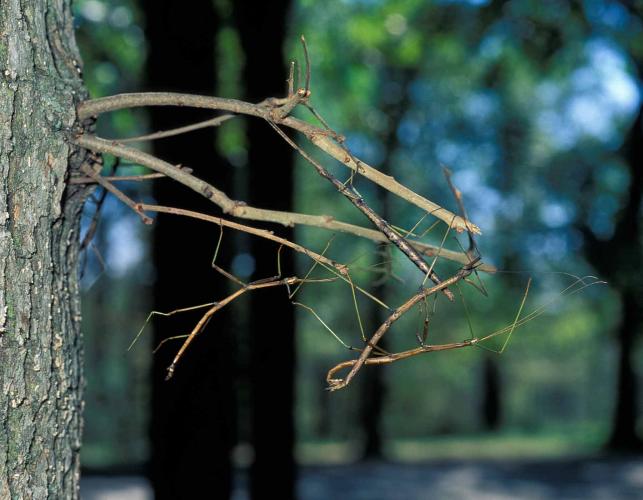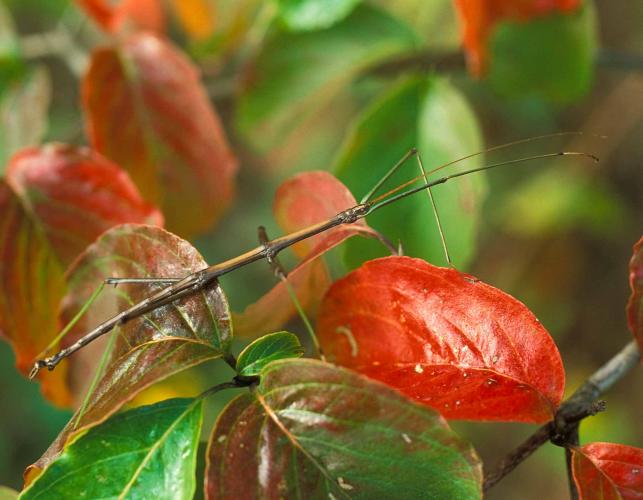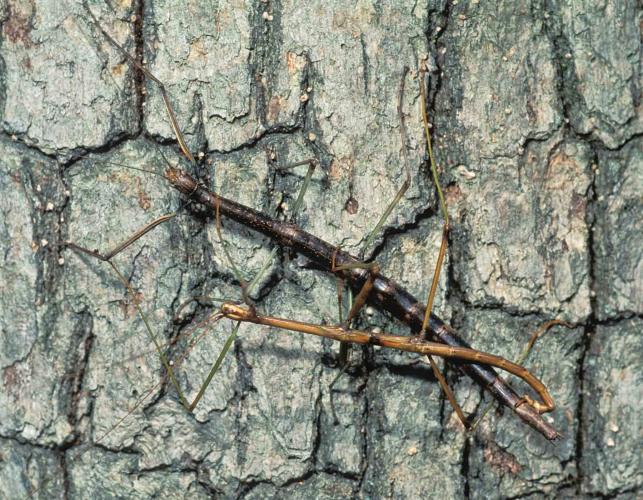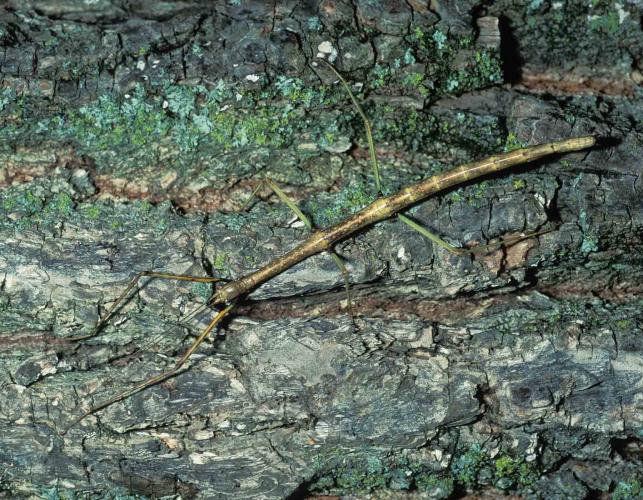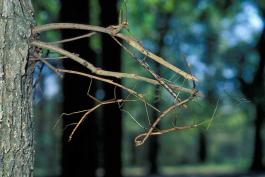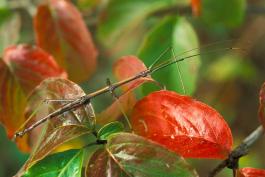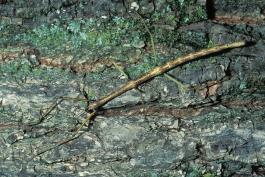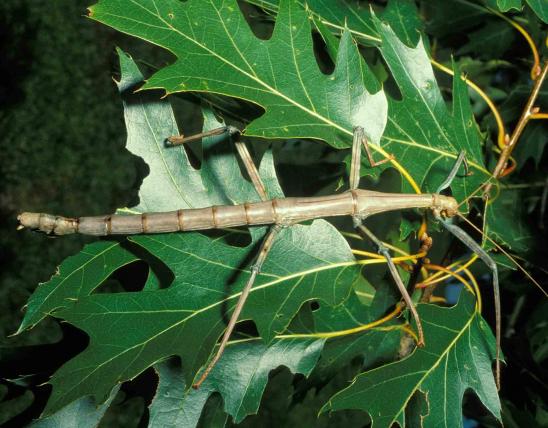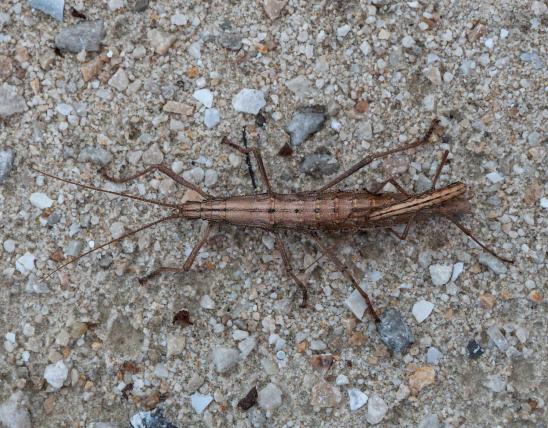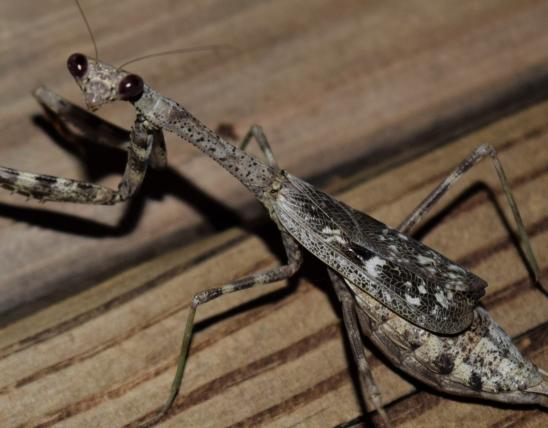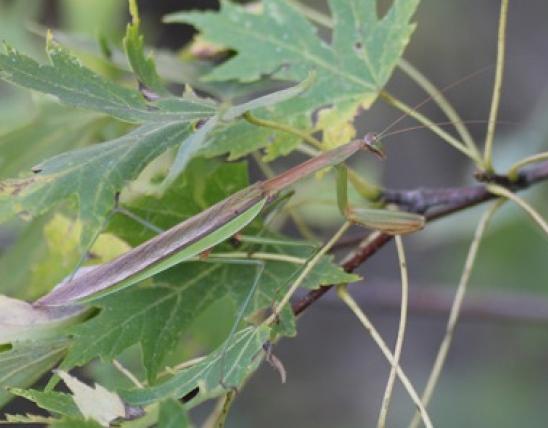
The northern walkingstick is Missouri's most common species of walkingstick. It is very slender, and the antennae are two-thirds the total body length. Males are brown; females are greenish brown and larger. The pincerlike circi at the tip of the abdomen are not segmented. Immatures are green.
Like other stick insects, the northern walkingstick eats leaves. It is perfectly camouflaged for a life in trees and shrubs. Walkingsticks not only look like twigs but also sway their bodies to mimic the motion of branches in a breeze. This species prefers the foliage of oaks and hazelnut. With Missouri’s many oak-hickory forests, it is no surprise it is common here.
Learn more about this and other walkingsticks on their group page.
Adult length (not counting antennae or other appendages): 3 inches (males) to 3¾ inches (females)
